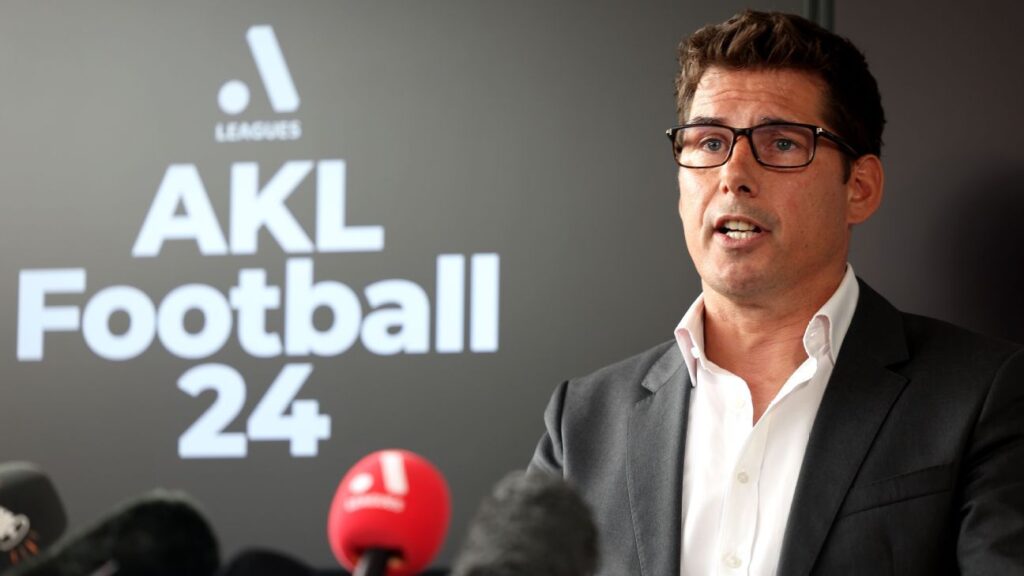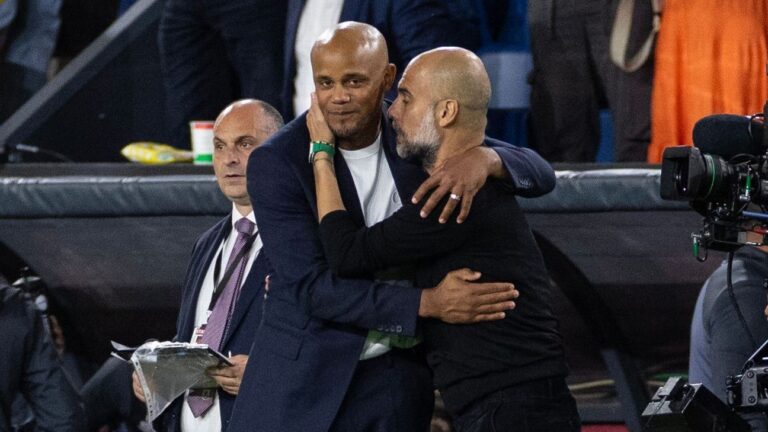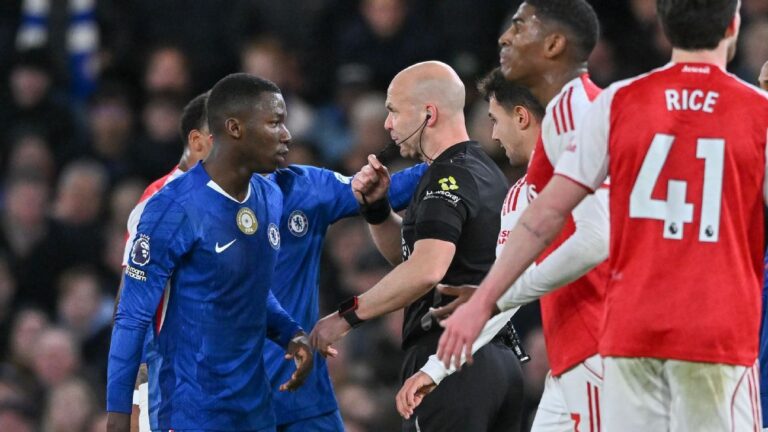The A-League’s pivot towards a “football focus” will bolster the competition’s status as a breeding ground for players who go on to do “great things” in Europe, according to Australian Professional Leagues (APL) commissioner Nick Garcia.
Assuming primary responsibility for the operation of the A-League Men and A-League Women last October, Garcia’s tenure at the APL helm has largely been dominated by off-field issues. Weeks of fan discontent surrounding over-policing at matches, the ongoing ownership issues at the Newcastle Jets and Canberra United, along with the competition shedding a significant portion of its workforce, have all contributed to yet another season of upheaval for the sport in Australia.
– Subscribe to ESPN’s Women’s Football Podcast: The Far Post
The league’s commitment to a “football focus,” with little elaboration on what the pledge actually entails, has almost been lost. The pivot has been somewhat forced upon the organisation by its finances, but Garcia says it nonetheless represents a concrete goal that the entire competition can strive towards.
“Historically, there wasn’t a football strategy at A-Leagues,” Garcia told ESPN. “I’m not sure there’s ever been a football strategy, it’s all been about fans, commercialisation, monetisation — which is really important — but if you plan that through and you haven’t defined what your product is, then how do you market it?
“How do you engage fans with it? How do you structure clubs around that league?”
For the A-League Men, this newly defined product will centre on fostering an environment that allows clubs to consistently produce players who can be sold to European leagues which, in turn, serve as feeders for major competitions such as the English Premier League, German Bundesliga, and Italian Serie A.
While the space will exist for players like Garang Kuol and Nestory Irankunda, who secured teenage moves to Newcastle United and Bayern Munich respectively, this means focusing on fostering more prospects such as Jordan Bos, Riley McGree, and Connor Metcalfe, who established footholds in Belgium and the English and German second tiers after first becoming consistent A-League starters at a young age.
“What we know from fans is that they like young talent coming through their systems, to see those kids get a chance … go on and do great things in Europe and maybe one day return as Socceroos or Matildas,” said Garcia. “That’s really important to them.
“Giving match minutes at a very young age is very important. Creating exciting, attacking football is important. Seeing young stars get developed is important.
“If you look at what age the Premier League is getting their young stars at the highest value for the clubs, it’s probably around the 23 mark. So we need to be getting match minutes into the youngest players possible. However, that said, we need to create an environment where they can get the time that’s needed — 80 games, plus — in the A-Leagues, so they get really properly developed before they go.”
Garcia conceded that football departments will, of course, remain independent and invariably have their own ideas about squad composition and style of play.
“There’s also a point there where clubs also need to have their own identity,” he said. “We can’t make them all cookie-cutter approaches in our league model.
“But if we stand for developing youth and that’s reflected in our regulations and is supported by our clubs — and we do this in consultation with the clubs, it’s not an isolated thing — then you can move it in that direction.
“We’d never be so draconian as to say: ‘No players over the age of 25.’ They’ve got to learn from people.”
Garcia, however, said that “the women’s game is completely different” and emphasised that the A-League Women required its own tailored approach.
“The growth of women’s football globally but particularly here in Australia and New Zealand as well off the back of the World Cup has been a phenomenal opportunity,” Garcia said.
“We need to think about the women’s game differently from the men’s game. I think there’s a real danger for us — I’m a middle-aged, white guy who’s grown up watching men play football — to look at it through the same lens and try and create that game. The women’s game is completely different.
“I think that it’s something that we are in a perfect storm to capitalize on. We’ve invested in the women’s game now since unbundling we’ve created three new teams. We’re going to continue to create those new teams. We got the match minutes up to a level that’s comparable with other global top leagues.
“We talk about the men’s game being about developing brilliant young talent and I think the women’s game certainly is as well, but I also think we could be a destination league, certainly in Asia.”




